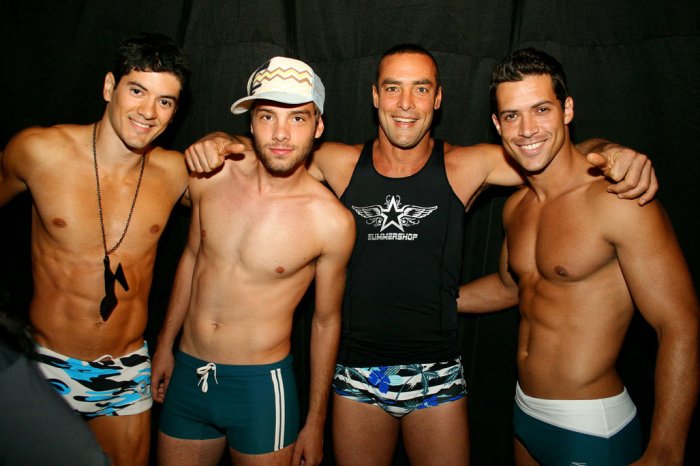
Actor Paulo Zulu (center, in tank top) backstage after the SummerShop show.
Dear Shaded Viewers,
When Gabriel Rajão from ABIT phoned me from Sao Paulo to invite me to fashion week in Brasilia, I reacted like a hysterical housewife on “The Price is Right” who had just won a free trip to Disney World.
“Brasiiiiiilia!?!?! Ohmygodohmygodohmygod! I’m going to Brasilia?!?!? Woooooo-hooooo!”
Everyone who knows me knows that Brasilia is a place I’ve always wanted to visit, because I’m obsessed with the retro-futuristic Modernist architecture of Oscar Niemeyer. Why, I even had a birthday party for Niemeyer at my apartment when he turned 100 last December. And I wanted to find out for myself, after reading hundreds of articles, if Brasilia was a successful city, a failed utopia, or an off-putting dystopia. I was giddy with anticipation…


Above: The dress in CFW’s logo echoes the shape of Oscar Niemeyer’s Metropolitan Cathedral in Brasilia.
But before I post my travel photos and musings (next week-ish?), let’s get down to business. The fifth edition of Capital Fashion Week, the largest fashion event in Brazil’s center-west, took place at the Ulysses Guimaraes Convention Center, located smack dab in the middle of the Monumental Axis. Created by entrepeneur Marcia Lima and co-sponsored by ABIT (Brazilian Textile and Apparel Industry Association), CFW featured many young designers who live and work in Brasilia. With at least five fashion schools based in Brasilia, Brazil’s capital is promising to be a hot-bed of new fashion talent. The hottest trend at CFW was sustainability–recycling to turn raw materials into the fashions of the future. And I’m talking about this on a global level–something that goes far beyond Mickey Boardman-style Dumpster diving. (Although, it must be said, Paper mag’s Mr. Mickey is an early pioneer of sustainability).
Here are the highlights from my favorite collections:
Camila Prado
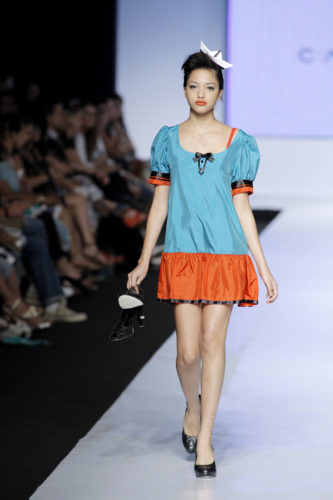
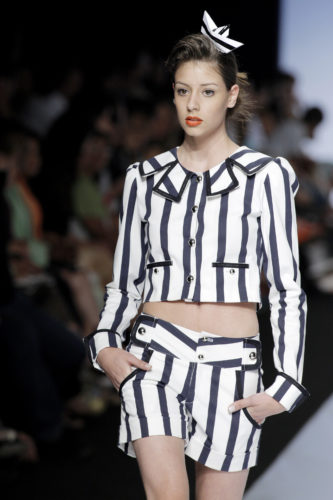
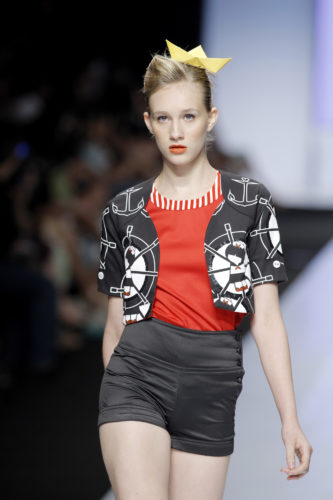
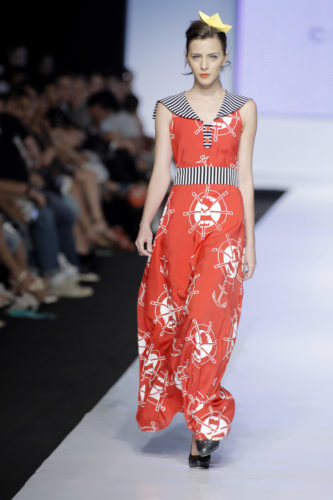
Prado’s theme was “Sailing Away” and one of her inspirations was the work of iconic World War II-era tattoo artist Sailor Jerry. Prado is the only designer to show in every edition of CFW and her clothes have become a cult favorite in Brasilia’s alternative youth scene. This month, Prado will compete for the Moda Brasil Award in Rio de Janeiro, with a collection inspired by Japanese immigration. We hope she wins!
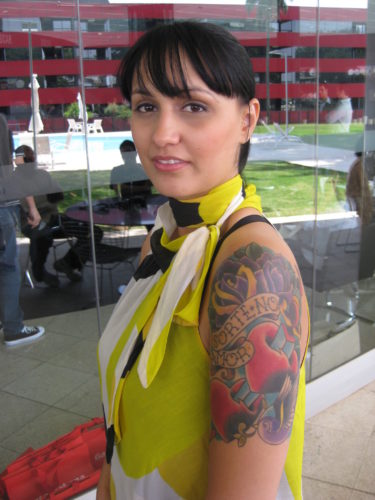
I met Camila Prado during the breakfast meet-and-greet at the Palace Hotel, a Niemeyer design. Raised in Riacho Fundo 1, one of Brasilia’s satellite cities, Prado said she loves Brasilia because “it’s a fresh city. And I really feel like there’s a new fashion movement happening here.” In fact, many of the young people from Brasilia who I met spoke very enthusiastically of living in Brasilia. They love its order and cleanliness, the simplicity of the residential buildings, and the uniqueness of Niemeyer’s buildings. This is a far cry from the Brazilian attitude toward the capital, located near the center of the country, back in 1960 when the city was brand-new. Many government workers from the former capital, Rio de Janeiro, were forced to move to Brasilia and were horrified by this brave new world’s antiseptic Modernism, absence of street culture, and–perhaps the worst aspect of all–its long, cruel distance from a beach.
SummerShop
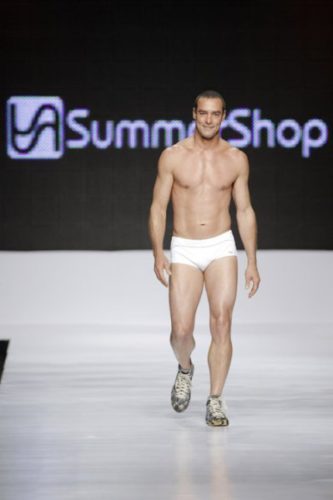
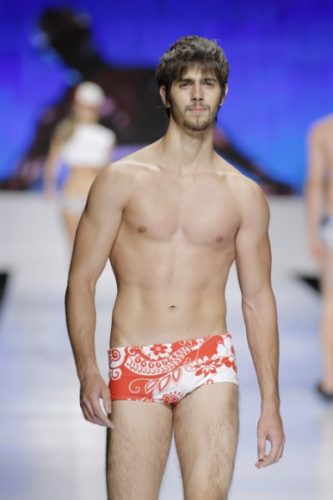


The fact that Brasilia is far from the ocean and the beach hasn’t hampered the success of Brasilia-based swimwear brand SummerShop. And really, what is a Brazilian fashion week without swim suits and lots of exposed male flesh? When hunky Brazilian actor Paulo Zulu (upper left-hand corner) opened the show, pandemonium broke loose. The women in the audience–diplomat and ambassadors’ wives and daughters and local fashion students–went WILD. Brazilian girls gone wild, in fact. They cheered, they screamed, they shoved each other out of the way in order to snap Zulu’s photo. It was so refreshing. Fashion people almost never react that way at the shows in New York when a celebrity graces the catwalk. Oh, no no no no no, darling. That would be so uncool, so unseemly. That is the difference between hot-blooded Latin Americans and frosty North-Eastern Americans. If someone in NY carried on like that, they would receive an icy, blood-freezing glare from Anna Wintour or have a hit put out on them by Cathy Horyn. But really, I think people SHOULD cheer at fashion shows! Why all the sober scrutiny and repressed libidos? It’s FASHION, people! Lighten up. (God, I miss Polly Mellen….)
Cia do Lacre

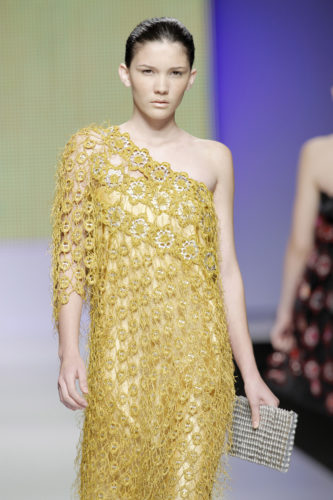
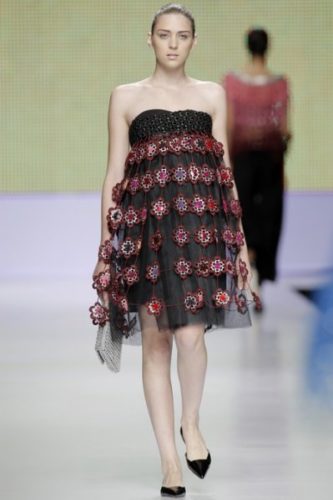

There was a time, back in the ’70s I think, when aluminum beer and soda cans had tabs that seperated from the cans when they were pulled off. The streets were littered with them but a few enterprising individuals got creative and strung the tabs into necklaces and bracelets and sold them at hippie-dippy shops in places like New Hope, Pennsylvania. (Not that I would know–I wasn’t born yet!) Then, when fools started putting the tabs inside their beer cans and subsequently choking on them when the the last drop of suds was chugged, a smart person invented cans where the tabs stayed on after you opened the can. These tabs are the cornerstone of all clothing and accessories made by Brazilian artisan cooperative, Cia do Lacre.
A little background: Created in 1997, the association has changed the lives of many people in the community. Women with families who were once unemployed and unable to find jobs, were now able to work, guarantee an income for their families and elevate their self-esteem. Today, the association has 120 women, another 120 are in training. They make approximately 2,000 garments a month and export to the United States and Europe. The Association is a non-profit organization, making the artisans part of the cooperative and owners of their business. Besides guaranteeing a job and a better quality of life for the artisans, Cia do Lacre helps preserve the environment. The raw material used by the artisans to manufacture clothes, handbags, belts, rugs and other accessories come from what was once considered trash: aluminum soda and beer can tabs. The creativity of these women knows no limits and the quality of work made them successful in Brazil and abroad.
The artisans worked hard to prepare the clothes for this show. Between 200 and 300 kilos of aluminum tabs were used to manufacture the pieces for this collection. Almost a million aluminum tabs that would in other circumstances be polluting the environment, were reused in this collection. A large handbag, for example, can use up to 10,000 tabs. When I first heard about the concept, it seemed to me dubious that they could create an entire collection around this one idea…but I was very impressed with the results.
Zinc

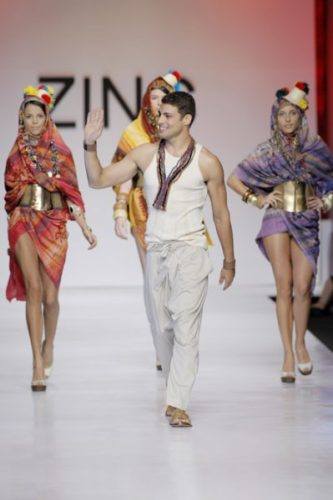
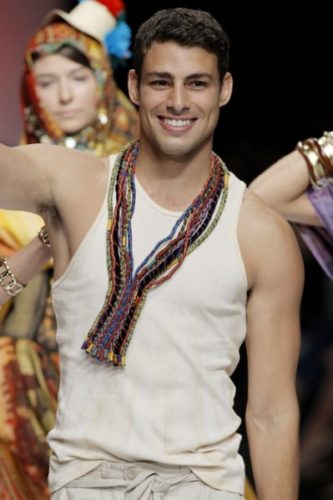

For some odd reason, I was not at this show–maybe I was knocked out by that shot of chartreuse I had at the churrascaria during lunch (see below) and back at the hotel napping? I really don’t remember. In any event, it looks like I missed a good one. I mean, look at those beautiful Brazilan men! I think the one smiling is a soap opera star. I love the desert-chic wrap dresses the girls are wearing.
Lei Basica


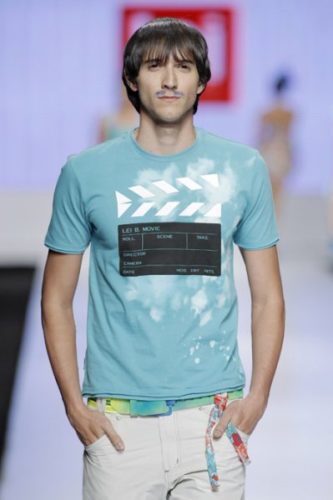

Loved the way the feather headpieces complemented the clothes in this show. The male model on the lower right, he was great. He had the best walk, subtley swiveling his hips back and forth like they were on ball bearings, it was a male model walk I had never seen before. And he had a knowing smirk on his face the whole time–almost as if he was about to burst out laughing at any second. We need a video of this one, because the music was great too. Brazilian indie rock.

Above: Oscar Niemeyer’s Alvorada Palace, where the President of Brazil resides.
During Capital Fashion Week, we were guests at the ultra-modernist, space-age-bachelor-pady Brasilia Alvorada Park Hotel, designed by Japanese architect Ruy Otake. It was a chic address, as we were right next to the president’s house (Alvorada Palace) where Brazil’s Socialist leader, Luiz Inacio Lula da Silva, lives. The hotel also overlooks Lago Paranoa, the artificial lake that was created to combat the region’s extreme dryness back in the late ’50s when Brasilia was built.
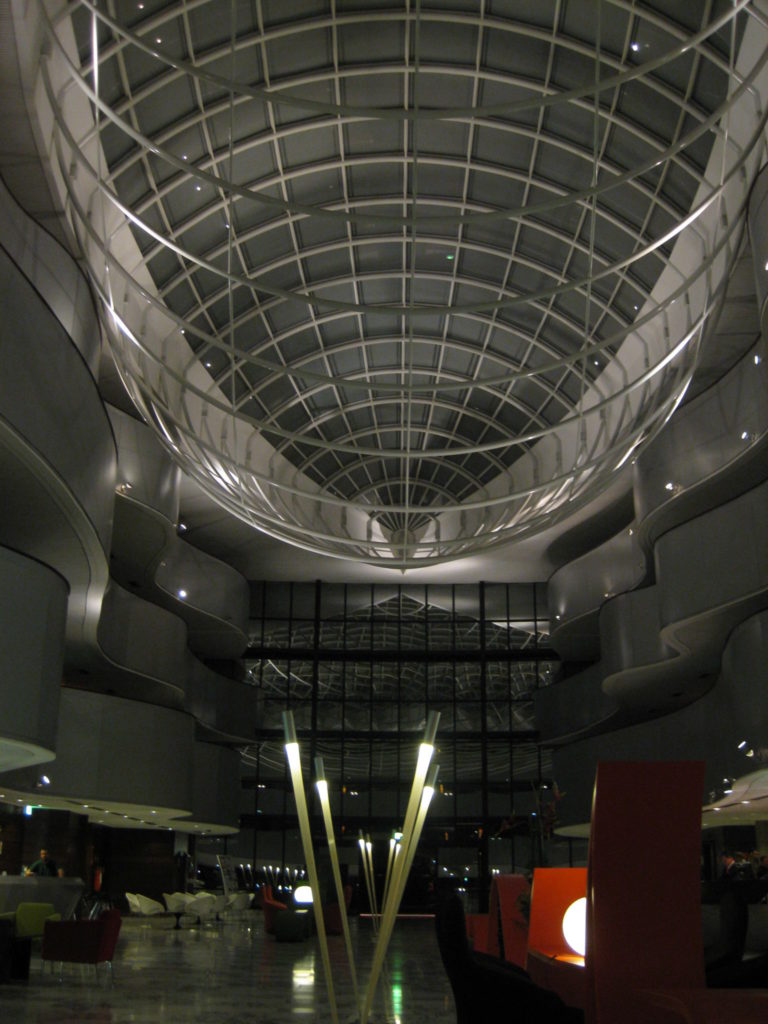
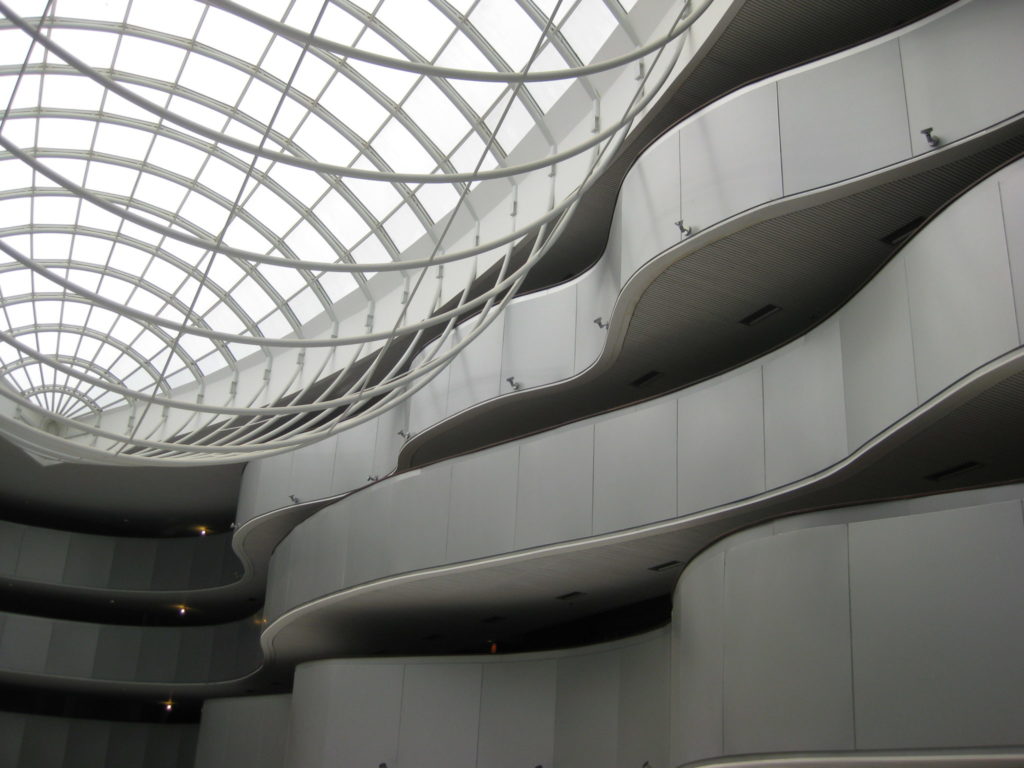
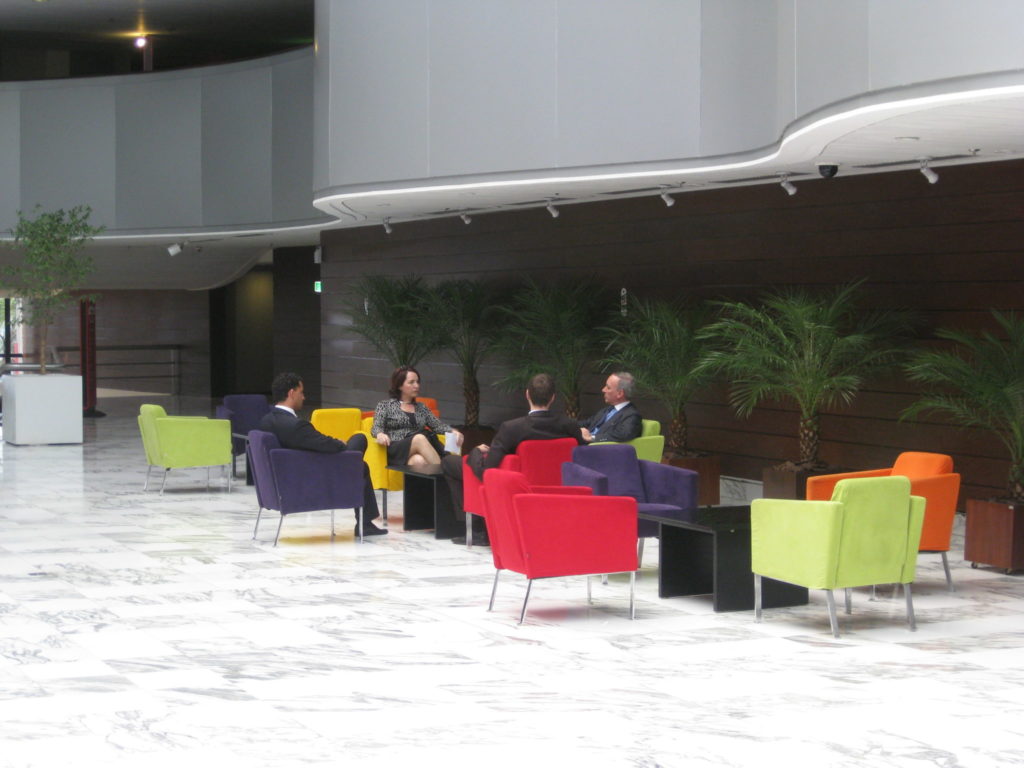
Above: Three photos I took of the Brasilia Alvorada Park Hotel’s lobby.
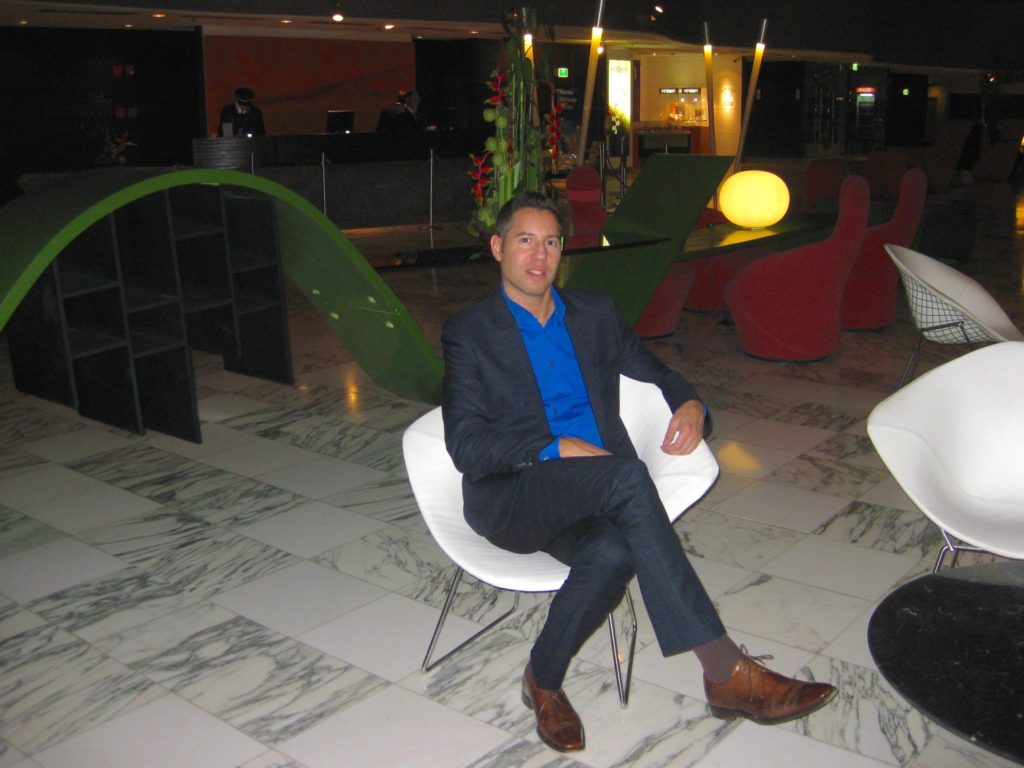
Me in the hotel lobby waiting to leave for the Portuguese Ambassador’s cocktail.
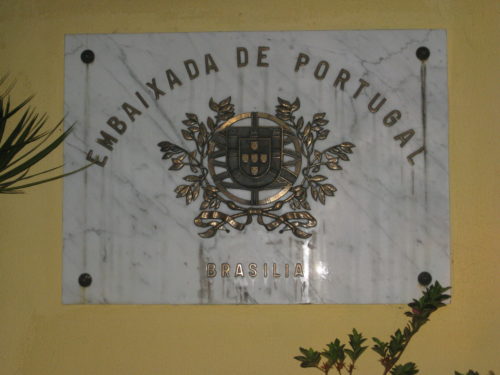


Hanging out in the Ambassador’s gardens
We were honored to be invited to a party at the home of the Portuguese Ambassador to Brazil’s home near the elite shore of Lake Paranoa. Exquisite Portuguese food and wine were served as business-suited diplomats rubbed shoulders with young, t-shirt-clad fashion designers.

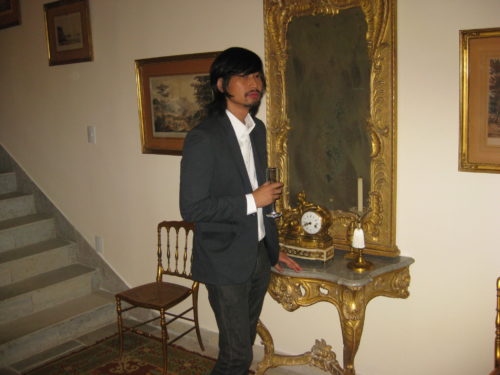
Fancy, fancy! Graphic designer/fashion blogger Anh Tuan Pham felt right at home in the Ambassador’s gilded manse.

Above: The “United States” section of the Ambassador’s library. The copy of “An Idiot’s Guide to American History” was on loan from George W.’s private collection. Also note copy of “The End of the American Era.” Too true, yeah?
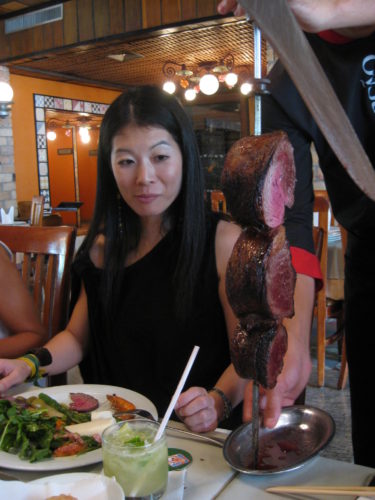
Kyoko Masunari, an editor for Tokyo’s GAP magazine, hungrily eyes some Brazilian beef–kind of like me at the SummerShop show!
We were invited to have a deliciously decadent lunch at Porcao, a popular churrascaria, or Brazilian steakhouse, with restaurants all over the world. Waiters bring big, juicy cuts of meats to the table and slice them off onto your plate (I loved the chicken hearts). And then there was a buffet with all manner of Brazilian vittles. And caipirinhas to wash it all down. “Eat sloooowly,” Gabriel warned us repeatedly. “I’ve had journalists get sick because they go crazy when they see all that food and end up over-doing it.”
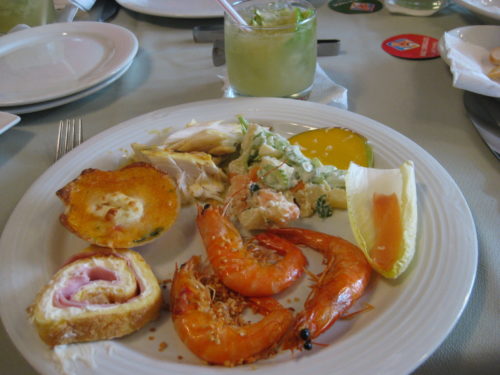
Shriiiiiimp!
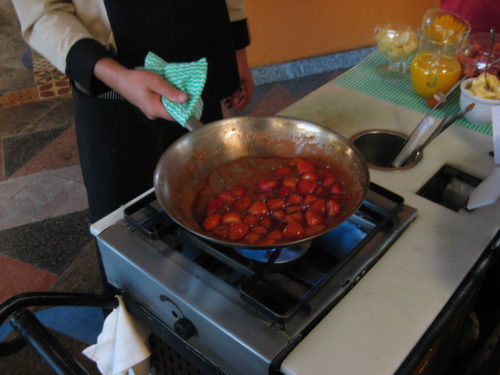

An ice-cold glass of chartreuse went nicely with the strawberry flambe and coconut ice cream. Heavenly.
Time to hit the treadmill. Thanks for reading! (And stay tuned for my Brasilia travel report).
Besos,
Glenn Belverio

